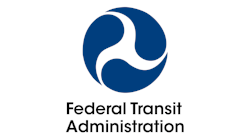OP-ED: President Lyndon Johnson is founding father of federal transportation assistance
President Lyndon Johnson was born on Aug. 27, 1908. Many remember him for succeeding President John F. Kennedy after his assassination in Dallas, Texas, on Nov. 22, 1963. Others remember him for his domestic Great Society Program, which included Civil Rights, Medicare, Medicaid, War on Poverty and public broadcasting. There was also foreign policy, most notably the Vietnam War.
Few remember that the success of public transportation can be traced back to one of President Johnson's greatest accomplishments that continues to benefit many Americans today. On July 9, 1964, he signed the "Urban Mass Transportation Act of 1964" into law. Subsequently, this has resulted in the investment of several hundred billion dollars into public transportation under grants from the Federal Transit Administration (FTA) (prior to 1991 known as the Urban Mass Transit Administration).
In the current federal Fiscal Year 2024, the FTA has made available a record $21 billion in funding under various formula and competitive discretionary programs to more than 900 transit agencies around the U.S. Some of these larger formula programs include:
- $7.2 billion under Section 5307 Urban Formula, including $365 million Section 5340 High Density States and $294 million Section 5340 Growing States
- $4 billion under Section 5337 State of Good Repair ($4 billion High Intensity Fixed Guideway and $122 million High Intensity Motorbus)
- $630 million under Section 5339 Bus and Bus Facilities
- $51 million under Section 5307 Passenger Ferry
- $438 million under Section 5310 Enhanced Mobility of Seniors and Individuals with Disabilities
- $938 million under Section 5311 Rural Area Formula Program
- $343 million under Division J All Stations Accessibility
One way these dollars can be used, depending upon the program, is to pay for replacement of aged buses, paratransit or commuter vans, light rail, subway, commuter rail or ferries that have reached their minimum useful life according to federal replacement eligibility criteria. They are also available for fleet expansion.
There are also several national competitive discretionary programs to supplement transit agencies formula programs:
- $3.8 billion under Section 5309 Capital Investment New Starts & Core Capacity
- $1.1 billion under Section 5339(c) Low or No Emission
- $390 million under Section 5339 Buses and Bus Facilities
- $300 million under Section 5337 State of Good Repair Rail Replacement
- $216 million under Section 71103 Ferry Service for Rural Communities
- $49 million under Section 71102 Electric or Low Emitting Ferry
Millions of Americans daily continue utilizing various public transportation alternatives. They include local and express bus, bus rapid transit, paratransit and commuter vans, ferry, jitney, light rail, subway and commuter rail services.
Investment in public transportation today contributes to economic growth, employment and stronger economy. Dollar for dollar, it is one of the best investments we can make.
What better way to honor the late President Johnson and all that has been achieved these past 60 years in public transportation by continuing funding the federal Highway Trust Fund and Mass Transit Account.
Happy Birthday!

Larry Penner
Larry Penner is a transportation advocate, historian and writer who previously served as a former director for the Federal Transit Administration Region 2 New York Office of Operations and Program Management. This included the development, review, approval and oversight for billions in capital projects and programs for New Jersey Transit, New York Metropolitan Transportation Authority, NYC Transit bus, subway and Staten Island Railway, Long Island and Metro North railroads, MTA Bus, NYCDOT Staten Island Ferry along with 30 other transit agencies in New York and New Jersey.





